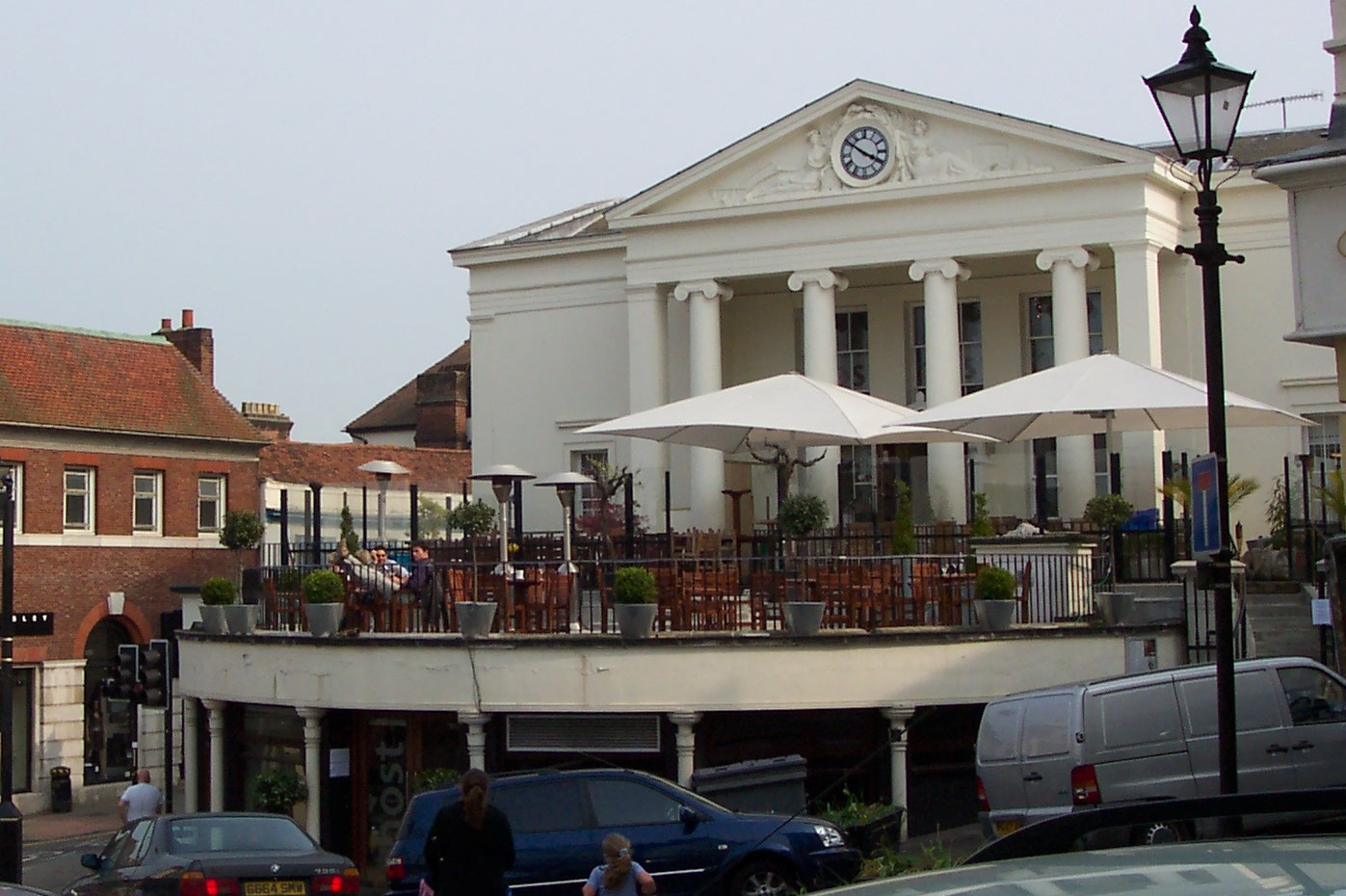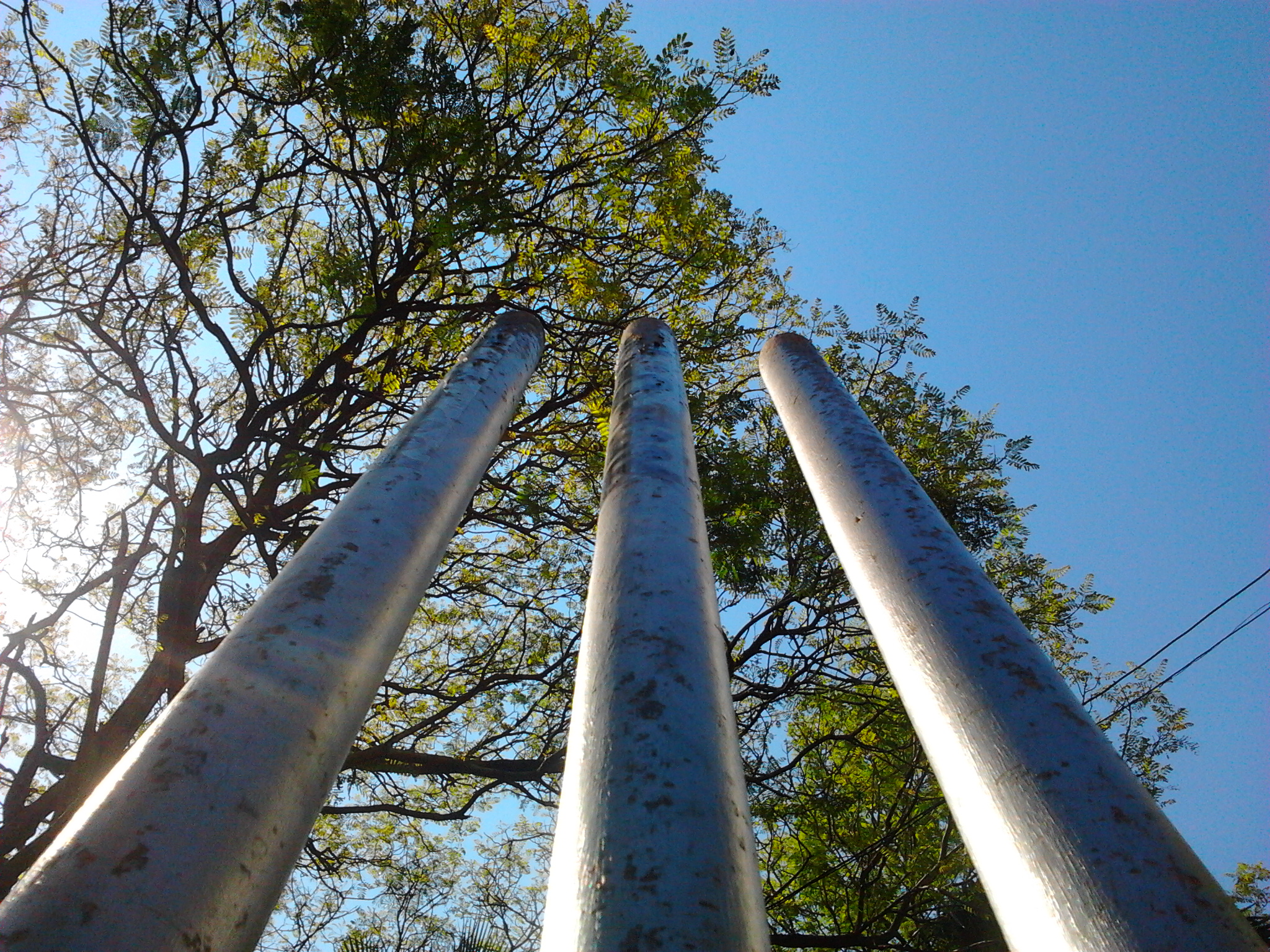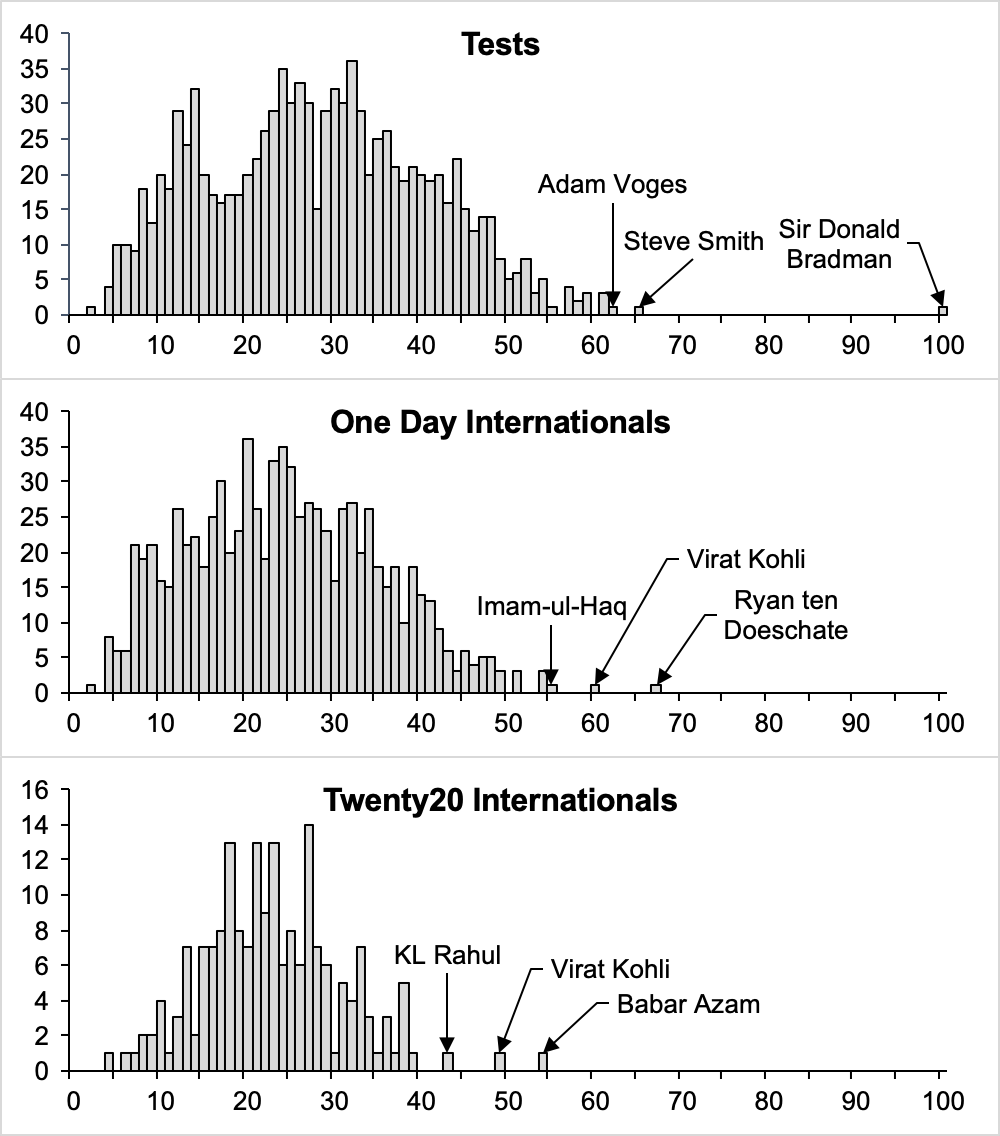|
Edward Shaw (cricketer, Born 1892)
Edward Alfred Shaw (16 May 1892 − 7 October 1916) was an English cricketer and British Army officer. A bespectacled man, Shaw was a right-handed batsman who fielded as a wicket-keeper. The son of Edward Domett Shaw, the first Bishop of Buckingham, and Agnes Shaw, he was born in Bishop's Stortford, Hertfordshire. He was educated at Marlborough College in Wiltshire, where he played for the college cricket team, playing for the team for 5 years, acting as captain in the last 3 of these. Shaw had made his debut for Buckinghamshire in the Minor Counties Championship in 1908 against Wiltshire. He undertook studies at Brasenose College, Oxford, making his first-class debut for Oxford University Cricket Club against the Free Foresters. He made 12 further first-class appearances for the university, the last of which came against Cambridge University in 1914. In his 13 first-class matches, he scored 424 runs at an average of 21.20, with a high score of 57 not out. This score, on ... [...More Info...] [...Related Items...] OR: [Wikipedia] [Google] [Baidu] |
Bishop's Stortford
Bishop's Stortford is a historic market town in Hertfordshire, England, just west of the M11 motorway on the county boundary with Essex, north-east of central London, and by rail from Liverpool Street station. Stortford had an estimated population of 41,088 in 2020. The district of East Hertfordshire, where the town is located, has been ranked as the best place to live in the UK by the Halifax Quality of Life annual survey in 2020. The town is commonly known as “Stortford” by locals. History Etymology The origins of the town's name are uncertain. One possibility is that the Saxon settlement derives its name from 'Steorta's ford' or 'tail ford', in the sense of a 'tail', or tongue, of land. The town became known as Bishop's Stortford due to the acquisition in 1060 by the Bishop of London. The River Stort is named after the town, and not the town after the river. When cartographers visited the town in the 16th century, they reasoned that the town must have been nam ... [...More Info...] [...Related Items...] OR: [Wikipedia] [Google] [Baidu] |
Wicket-keeper
The wicket-keeper in the sport of cricket is the player on the fielding side who stands behind the wicket or stumps being watchful of the batsman and ready to take a catch, stump the batsman out and run out a batsman when occasion arises. The wicket-keeper is the only member of the fielding side permitted to wear gloves and external leg guards. The role of the keeper is governed by Law 27 of the Laws of Cricket. Stance Initially, during the bowling of the ball the wicket-keeper crouches in a full squatting position but partly stands up as the ball is received. Australian wicket-keeper Sammy Carter (1878 to 1948) was the first to squat on his haunches rather than bend over from the waist (stooping). Purposes The keeper's major function is to stop deliveries that pass the batsman (in order to prevent runs being scored as 'byes'), but he can also attempt to dismiss the batsman in various ways: * The most common dismissal effected by the keeper is for him to '' catch'' a ... [...More Info...] [...Related Items...] OR: [Wikipedia] [Google] [Baidu] |
Stumps
In cricket, the stumps are the three vertical posts that support the bails and form the wicket. '' Stumping'' or ''being stumped'' is a method of dismissing a batsman. The umpire ''calling stumps'' means the play is over for the day. Part of the wicket The stumps are three vertical posts which support two bails. The stumps and bails are usually made of wood, most commonly ash, and together form a wicket at each end of the pitch. The overall width of each wicket is 9 inches (22.9 cm). Each stump is 28 inches (71.1 cm) tall with maximum and minimum diameters of 1 inches (3.81 cm) and 1 inches (3.49 cm). They have a spike at one end for inserting into the ground, and the other end has a U-shaped 'through groove' to provide a resting place for the bails. In junior cricket the items have lesser dimensions. Each stump is referred to by a specific name: * Off stump is the stump on the off side of the wicket (the same side as the batsman's bat). * Mid ... [...More Info...] [...Related Items...] OR: [Wikipedia] [Google] [Baidu] |
Half Century
One half ( : halves) is the irreducible fraction resulting from dividing one by two or the fraction resulting from dividing any number by its double. Multiplication by one half is equivalent to division by two, or "halving"; conversely, division by one half is equivalent to multiplication by two, or "doubling". One half often appears in mathematical equations, recipes, measurements, etc. Half can also be said to be one part of something divided into two equal parts. For instance, the area ''S'' of a triangle is computed. :''S'' = × perpendicular height. One half also figures in the formula for calculating figurate numbers, such as triangular numbers and pentagonal numbers: : \frac and in the formula for computing magic constants for magic squares : M_2(n) = \frac \left(n^ + 1\right) The Riemann hypothesis states that every nontrivial complex root of the Riemann zeta function has a real part equal to . One half has two different decimal expansions, ... [...More Info...] [...Related Items...] OR: [Wikipedia] [Google] [Baidu] |
Batting Average (cricket)
In cricket, a player's batting average is the total number of runs they have scored divided by the number of times they have been out, usually given to two decimal places. Since the number of runs a player scores and how often they get out are primarily measures of their own playing ability, and largely independent of their teammates, batting average is a good metric for an individual player's skill as a batter (although the practice of drawing comparisons between players on this basis is not without criticism). The number is also simple to interpret intuitively. If all the batter's innings were completed (i.e. they were out every innings), this is the average number of runs they score per innings. If they did not complete all their innings (i.e. some innings they finished not out), this number is an estimate of the unknown average number of runs they score per innings. Each player normally has several batting averages, with a different figure calculated for each type of match ... [...More Info...] [...Related Items...] OR: [Wikipedia] [Google] [Baidu] |
Cambridge University Cricket Club
Cambridge University Cricket Club, first recorded in 1817, is the representative cricket club for students of the University of Cambridge. Depending on the circumstances of each individual match, the club has always been recognised as holding first-class status. The university played List A cricket in 1972 and 1974 only. It has not played top-level Twenty20 cricket. With some 1,200 members, home matches are played at Fenner's. The club has three men's teams (Blues, Crusaders and the Colleges XI) and one women's team which altogether play nearly 100 days of cricket each season. The inaugural University Match between Cambridge and Oxford University Cricket Club was played in 1827 and the match was the club's sole remaining first class fixture each season until 2020. The club has also operated as part of the Cambridge University Centre of Cricketing Excellence (Cambridge UCCE) which included players from Cambridge University and was Anglia Polytechnic University, now Anglia Rusk ... [...More Info...] [...Related Items...] OR: [Wikipedia] [Google] [Baidu] |
Free Foresters Cricket Club
Free Foresters Cricket Club is an English amateur cricket club, established in 1856 for players from the Midland counties of England. It is a 'wandering' (or nomadic) club, having no home ground. The Free Foresters were founded by the Rev. William Kirkpatrick Riland Bedford, who had been appointed rector of Sutton Coldfield in 1850. At Oxford University, he had discovered cricket and in 1847 he had set up the Sutton Coldfield Cricket Club. The name of the Free Foresters was chosen to reflect that archery had been popular at the Rectory Park long before cricket was introduced. The club played its first match on 20 July 1856 against the Pilgrims of the Dee, at the Rectory Ground in Sutton Coldfield. In 1863, the Free Foresters presented the rector with a silver salver as a token of their esteem. The salver can be seen at Lord's cricket ground. For many years, starting in 1912, their matches against Oxford University and Cambridge University had first-class status, the last such ... [...More Info...] [...Related Items...] OR: [Wikipedia] [Google] [Baidu] |
First-class Cricket
First-class cricket, along with List A cricket and Twenty20 cricket, is one of the highest-standard forms of cricket. A first-class match is one of three or more days' scheduled duration between two sides of eleven players each and is officially adjudged to be worthy of the status by virtue of the standard of the competing teams. Matches must allow for the teams to play two innings each, although in practice a team might play only one innings or none at all. The etymology of "first-class cricket" is unknown, but it was used loosely before it acquired official status in 1895, following a meeting of leading English clubs. At a meeting of the Imperial Cricket Conference (ICC) in 1947, it was formally defined on a global basis. A significant omission of the ICC ruling was any attempt to define first-class cricket retrospectively. That has left historians, and especially statisticians, with the problem of how to categorise earlier matches, especially those played in Great Britain be ... [...More Info...] [...Related Items...] OR: [Wikipedia] [Google] [Baidu] |
Brasenose College, Oxford
Brasenose College (BNC) is one of the constituent colleges of the University of Oxford in the United Kingdom. It began as Brasenose Hall in the 13th century, before being founded as a college in 1509. The library and chapel were added in the mid-17th century and the new quadrangle in the late 19th and early 20th centuries. For 2020–21, Brasenose placed 4th in the Norrington Table (an unofficial measure of performance in undergraduate degree examinations). In a recent Oxford Barometer Survey, Brasenose's undergraduates registered 98% overall satisfaction. In recent years, around 80% of the UK undergraduate intake have been from state schools. Brasenose is home to one of the oldest rowing clubs in the world, Brasenose College Boat Club. History Foundation The history of Brasenose College, Oxford stretches back to 1509, when the college was founded on the site of Brasenose Hall, a medieval academic hall whose name is first mentioned in 1279. Its name is believed to derive f ... [...More Info...] [...Related Items...] OR: [Wikipedia] [Google] [Baidu] |
Wiltshire County Cricket Club
Wiltshire County Cricket Club is one of twenty minor county clubs within the domestic cricket structure of England and Wales. Founded in 1893, it represents the historic county of Wiltshire. The team is a member of the Minor Counties Championship Western Division and plays in the MCCA Knockout Trophy. Wiltshire played List A matches occasionally from 1964 until 2005 but is not classified as a List A team ''per se''. The club is a member of Wiltshire Cricket Limited, the governing body for cricket in the county. Venues The club is peripatetic, playing its matches around the county at:CricketArchive – Wiltshire matches and venues Retrieved on 30 May 2010. * [...More Info...] [...Related Items...] OR: [Wikipedia] [Google] [Baidu] |
Minor Counties Championship
The NCCA 3 Day Championship (previously the Minor Counties Cricket Championship) is a season-long competition in England and Wales that is contested by the members of the National Counties Cricket Association (NCCA), the so-called national counties that do not have first-class status. History The competition began in 1895, with the Worcestershire honorary secretary Paul Foley being influential in its creation. Apart from the two World War periods, it has been contested annually ever since. From 2014 to 2019 the tournament was known as the Unicorns Championship. Four clubs which used to play in the Minor Counties Championship have been granted first-class status – Worcestershire in 1899; Northamptonshire in 1905; Glamorgan in 1921 and Durham in 1992. Until 1959, when the Second XI Championship was founded, most second XIs of the first-class counties used to contest the Minor Counties. A few continued to do so and the last to withdraw was Somerset 2nd XI after the 1987 sea ... [...More Info...] [...Related Items...] OR: [Wikipedia] [Google] [Baidu] |
Captain (cricket)
The captain of a cricket team, often referred to as the skipper, is the appointed leader, having several additional roles and responsibilities over and above those of the other players. As in other sports, the captain is usually experienced and has good communication skills, and is likely to be one of the most regular members of the team, as the captain is responsible for the team selection. Before the game the captains toss for innings. During the match the captain decides the team's batting order, who will bowl each over, and where each fielder will be positioned. While the captain has the final say, decisions are often collaborative. A captain's knowledge of the complexities of cricket strategy and tactics, and shrewdness in the field, may contribute significantly to the team's success. Due to the smaller coaching/management role played out by support staff, as well as the need for greater on-field decision-making, the captain of a cricket team typically shoulders more re ... [...More Info...] [...Related Items...] OR: [Wikipedia] [Google] [Baidu] |







.jpg)
